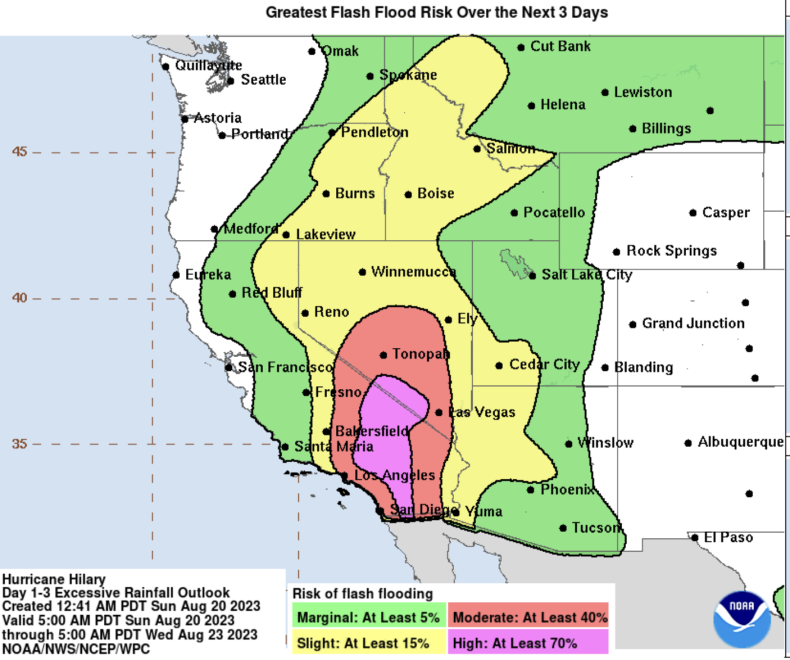Forecasters have warned of potential flash floods around Lake Mead in California as Hurricane Hilary approaches the area as it moves north from Mexico.
Hilary is continuing to barrel towards the Baja California peninsula in Mexico as a weakened but dangerous Category 1 hurricane, the National Weather Service (NWS) said early Sunday.
Lake Mead, which sits at the Nevada-Arizona border, is in a red zone where forecasters predict there is moderate risk of flash flooding. The Colorado River reservoir has seen its water level drop over the past year because of a prolonged drought and climate change.
Forecasters said it is expected to cross into the Southwest as a tropical storm later on Sunday, and likely to bring "catastrophic and life-threatening" flooding to the region with it.

Many states in the west face some risk of flash flooding over the next three days, according to a map from the Weather Prediction Center.
"Heavy rainfall in association with Hilary is expected across the Southwestern United States, most intense from today into Monday morning," the NWS said in its latest advisory at 2 a.m.
"Rainfall amounts of 3 to 6 inches, with isolated amounts of 10 inches, are expected across portions of southern California and southern Nevada. Dangerous to catastrophic flooding is expected."
Lake Mead and Lake Powell, which sits at the border of Arizona and Utah, have recorded a rise in water levels due to above-average precipitation and snowpack that melted over the spring and summer,
Lake Mead has recovered by nearly 20 feet since April, according to a website dedicated to tracking the reservoir's water levels.
However, the U.S. Bureau of Reclamation has said that recovery to a full pool is a still distant and the reservoirs are at a combined storage of only 36 percent of their usual capacity.
"The above-average precipitation this year was a welcome relief, and coupled with our hard work for system conservation, we have the time to focus on the long-term sustainability solutions needed in the Colorado River Basin," Bureau of Reclamation Commissioner Camille Calimlim Touton said in a statement issued to the media.
"As we experience a warmer, drier West due to a prolonged drought, accelerated by climate change, Reclamation is committed to leading inclusive and transparent efforts to develop the next-generation framework for managing the river system."

Meanwhile, a group of conservationists and scientists is urging the U.S. Bureau of Reclamation to fill Lake Mead by draining Lake Powell.
"We are now in a place where there isn't enough water in the system to keep Lake Powell and Lake Mead full," Glen Canyon Institute executive director Eric Balken told Newsweek.
"If you can't fill both and one of them is inundating a canyon that should have been a national park, why not fill Mead first and give the canyon a chance at restoration?"








